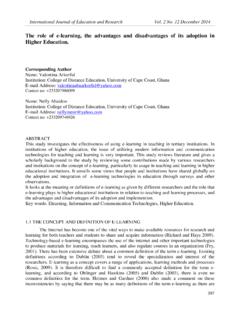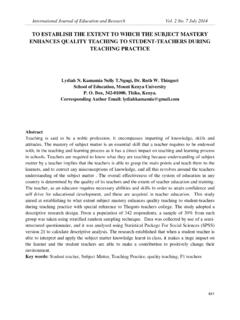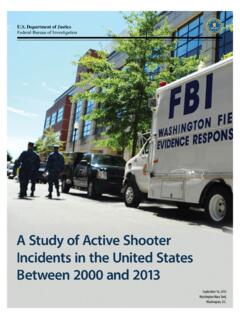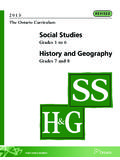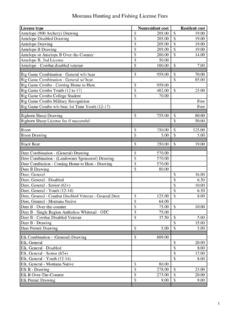Transcription of The impact of modern technology on the educational ...
1 International Journal of Education and Research Vol. 1 No. 9 september 2013 1 The impact of modern technology on the educational attainment of adolescents Author: Magwa Simuforosa Status: Lecturer University: Great Zimbabwe University Faculty: Education Department: educational Foundations Area of Specialisation: educational Psychology Abstract Today s youth have unprecedented access to modern technology and use them in expected and unexpected ways. Youth spend many hours a day using the technology , and the vast majority of them have access to Internet, cell phones, smart phone, video games and many more. Recent evidence raises concern about effects on academic performance. This chapter provides an overview of the impact of modern technology on the educational attainment of adolescents.
2 The purpose was to examine the relationship between adolescent usage of computers and academic performance. Within the qualitative research the case study design was adopted. Interviews and focus group discussions were the primary tools used to gather data. The study found out that modern technology impacts learning both positively and negatively. Recommendations were made for parents, educationists, the media, and policy makers among others, for ways to increase the benefits and reduce the harm that technology can have for adolescents. Key words: adolescents, educational achievement, modern technology , media Introduction modern technology has experienced vast expansion in recent years, leading to its extensive use by people from all generations. For a generation of young people, technology has assumed a substantial stake in their social and educational lives.
3 The vast majority of adolescents have access to computers, the Internet, cell phones, video games, and many other forms of modern technology . With the increased role of modern technology in the adolescents lives has come the increased concern about how children might be affected. technology is changing process and content to the extent that children today are immersed in a world that abounds with information The increasing amount of time children spend on modern technology has raised questions about the use of the technology .This chapter provides an assessment of the impact of modern technology on the educational achievement of adolescents. Background The evolution of technology has dramatically changed society. An endless number of people all over the world use modern technology . Of the most profound changes in the past decade has been ISSN: 2201-6333 (Print) ISSN: 2201-6740 (Online) 2 the widespread proliferation of information and communications technologies (UNICEF, 2011).
4 The growth of technology has changed the world, which in turn has changed the daily lives of adolescents. Dehmler (2009) asserts that children today are growing up in an interconnected, networked world. The youth have unprecedented access to modern technologies and use them in expected and unexpected ways. Teens all over the world are growing up in a world in which the Internet, cellphones, text messaging, television and video games, and other technologies dominate their communication and are an integral part of everyday life. Children are immersed in a world abounding with information (Livazovic, 2011). While technology is often described as the most important influence upon society, it remains a subject which has undergone little study. Recognizing that technology lies at the very heart of society, this study wishes to investigate its impact on adolescents.
5 Technological advancement is one of the most essential factors for teenagers in many societies. Due to the enormous development of technologies, this era can also be called the Age of technology . With the purpose of serving in the social, educational , and employment world, technology is becoming the most essential tool ( ). Social network sites, online games, video-sharing sites and gadgets, such as iPods and mobile phones are now fixtures of youth culture (UNICEF, 2011). They have so permeated youth lives that it is hard to believe that less than a decade ago, these technologies barely existed. modern technologies have altered how youth socialize and learn and that raises a new set of issues that educators, parents, and policy makers should consider. An important question which this paper tries to address is how modern technologies affect academic performance of these adolescents.
6 technology is an integral part of most adolescents lives, hence it is important to understand the impact it has on academic achievement. According to Honey (2005), Pew Internet and American Life Project carried out a survey that explored technology use among 802 youth ages 12 through 17. The survey was conducted between 26 July and 30 september 2012. The study found out that 78% of the teens have a cellphone and almost half of them, 47%, own smart phones; 23% of the teens have a tablet computer, a level comparable to a general adult population; 95% of teens use the internet, and 93% of teens have a computer or have access to one at home. Methodology The study was undertaken to present a deep understanding of the impact of modern technology on academic performance of adolescents. The qualitative research methodology was used to guide the study. According to Babbie (1990) qualitative research is sensitive to contexts and lived experiences, and aims for in-depth and holistic understanding in an attempt to do justice to the complexity of social life.
7 Within the qualitative research, the case study design was employed. The case study is an in-depth examination of a unit of interest such as an individual, and a company (Muranda, 2004:54). A case study selects a small geographical area or a very limited number of individuals as subjects of study. Purpose of case study is to probe deeply, to analyze intensively so International Journal of Education and Research Vol. 1 No. 9 september 2013 3 as to establish generalization about the wider population to which unit belongs. The population of this study consisted of adolescents, teachers and parents. Purposive sampling was adopted for this study. Durrheim (2006) purports that purposive sampling ensures that a small number of people participate in the study. Qualitative research focuses on the richness of data where a relatively small sample is selected.
8 The participants include 24 adolescents, 4 teachers and 4 parents. The researcher, as alluded to by Saunders (2009) was able to identify the participants as able to provide significant data. The research largely drew information from interviews and focus group discussions. Interviews are ways for participants to get involved and talk about their views. There is room for immediate feedback, probing and clarification. Leedy and Ormrod (2005) observe that in some cases, a researcher may want to interview several participants in a focus group to discuss a particular issue. Researcher can obtain a variety of opinions on a certain issue when time is limited. Discussion The study set out to investigate the impact of modern technology on the academic performance of adolescents. It emerged from the study that modern technology refers to many forms of electronic communications, which include the Internet, which is accessible through both computers and mobile phones, and instant messaging services, such as Whatsapp.
9 Dehlmer (2009) also asserts that modern technology refers to the types of devices most commonly used for communication and entertainment purposes, including: Computers (including Internet Access, Online Games, and other computer games); Cellphones (including phone calls and text messages); Console Video Games, and Television (including TV shows and movies shown on television and played on VCRs or DVD players). Thus, as also echoed by MacArthur (2008), the term modern technology is used to describe media ecology where more traditional media, such as books, TV, and radio are converging with digital media, specifically interactive media and media for social communication. All participants agreed that for adolescents, the modern technologies have assumed a substantial stake in their social and educational lives. The majority of the adolescents are increasingly connected in a virtual world using different technologies on a daily basis.
10 These technologies popular among teens, as also alluded to by Mikulec, Goniu and Moreno ( 2013 ) include cellphones, television, text messaging and video gaming. Of these Internet-using teens, approximately half use online social networking websites (SMS) such as MySpace ( ) and face book ( ). Thus adolescents are avid users of modern technologies. Social network sites, mobile phone operators, and other private actors are implementing savvy methods designed to appeal to youth in developed countries (UNICEF, 2011). Face book Zero was launched in May 2012 as a mobile site free of data charges and available in 45 countries, 10 in Africa. These developments are exciting and offer possibilities for transforming learning, innovation and much more. However, they also pose risk. ISSN: 2201-6333 (Print) ISSN: 2201-6740 (Online) 4 Although research on the effects of children s use of modern technology is still sketchy and ambiguous, some initial indications of positive and negative effects are beginning to emerge (Subrahamanyam, Kraut, Greenfield & Gross (2000)).

